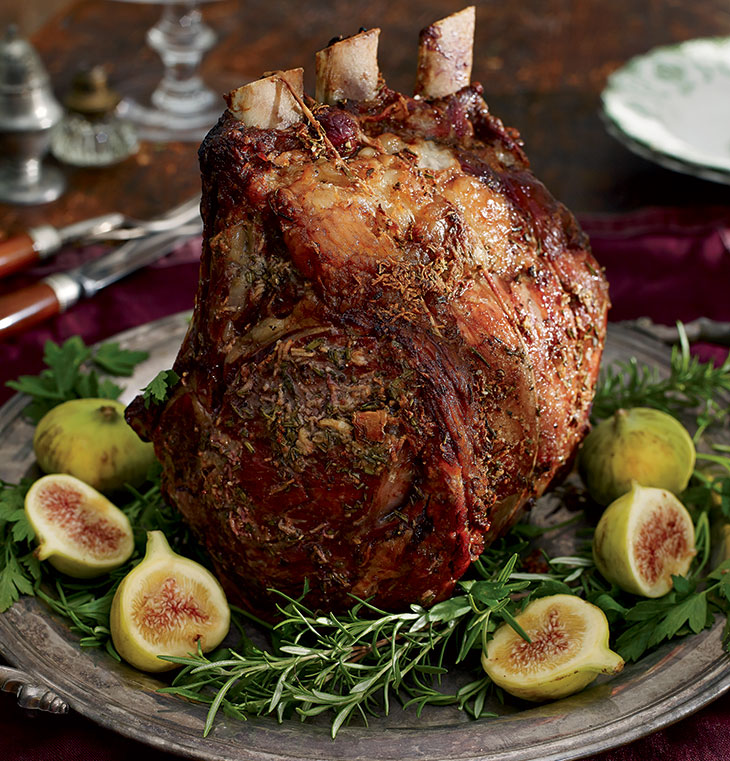Dry-Cured Rib Roast
A standing rib roast is an expensive cut, but a worthy holiday splurge. And the technique for making this dry-cured rib roast couldn’t be easier.

Dry-Cured Rib Roast
Photo Credit : Heath RobbinsThe hardest thing about making this spectacular roast is planning ahead so that the salt, rosemary, and garlic can sink into the meat, making it incredibly tender and flavorful. But the actual technique for making this dry-cured rib roast couldn’t be easier: Rub the meat all over with the seasonings, let it sit, then roast it. The resulting flavor is as good as that of any beef we’ve ever eaten, and the way it perfumes your house as it roasts will have everyone lined up by the oven. A standing rib roast is an expensive cut, but a worthy holiday splurge.
Yield:
12 to 18 servings, depending on size of roastIngredients
2-1/2 tablespoons kosher or sea salt
3 tablespoons minced fresh rosemary leaves
2 teaspoons freshly ground black pepper
2 teaspoons mustard powder
5 cloves garlic, smashed and minced
1 3 to 5 rib standing rib roast, tied, meat separated from bones (see “Note”)
Instructions
In a small bowl, mash together the salt, rosemary, pepper, mustard, and garlic to form a paste. Spread evenly over the entire outside of the roast and set the meat, rib side down, in a roasting pan. Cover it very loosely with foil, and leave it in the refrigerator at least overnight, preferably up to 3 days. The longer you let the meat “cure,” the more flavorful it will be.
Two to three hours before you plan to cook the meat, remove it from the refrigerator and let it come to room temperature. Preheat your oven to 425° and set a rack to the second-to-bottom position.
When the oven is hot, put the roast in, with the bones facing out. Roast 20 minutes; then reduce the heat to 325° and cook until an instant-read thermometer inserted into the thickest part reaches 120°, another 1 hour 15 minutes to 1 hour 30 minutes. (Out of the oven, the temperature will continue to rise, bringing it to a perfect medium-rare doneness.)
Transfer the roast to a cutting board; let it stand, uncovered, 30 minutes. Pour the drippings into a glass measuring cup for the Yorkshire pudding, if you’re making that. (You can make the pudding while the meat rests. For a prettier pudding, scrape out any bits of beef stuck to the bottom of the pan.)
When you’re ready to serve, cut the strings and remove the meat from the bones. Cut across the grain into 1/2-inch-thick slices. Transfer to a warm serving platter and pour any juices from the cutting board over the meat. Serve warm.


